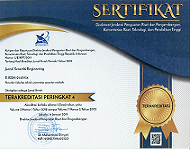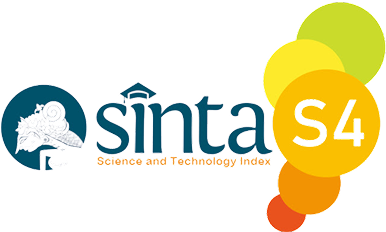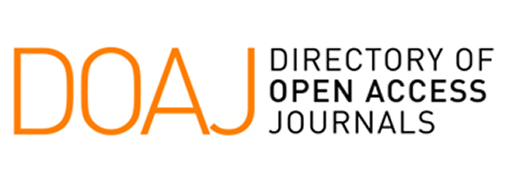The Role of Packaging in Food Loss and Waste Reduction: A Mini Review from Indonesia
Keywords:
Indonesia, packaging, food loss, food wasteAbstract
This brief review highlights findings from research conducted in Indonesia, examining how packaging can play a crucial role in reducing food loss and waste within the supply chain. While the broader economic, social, and environmental ramifications of food waste are extensively covered in existing literature, this study specifically focuses on how innovative packaging solutions can mitigate food loss. In the realm of fresh produce, effective packaging not only preserves quality but also optimizes product protection, ventilation, and temperature regulation. The study explores several avenues for packaging improvements, including enhanced designs for distribution that reduce damage during transportation and handling, and consumer packaging innovations that help reduce household food waste by facilitating correct portion control and clarifying expiration date labeling. Furthermore, the adoption of pre-packaged goods is shown to streamline handling processes and improve inventory turnover in retail settings. A key insight from this research is that optimal waste reduction sometimes necessitates increased packaging use, highlighting the need for a holistic approach where packaging design is integrated thoughtfully with product needs to foster sustainability in the supply chain.
References
[1] FAO, Food Wastage Footprint. Impacts on Natural Resources. Rome: Food and Agriculture Organisation of the United Nations, 2013.
[2] J. Gustavsson, C. Cederberg, U. Sonesson, and A. Meybeck, Global food losses and foodwaste: extent, causes and prevention, no. January. Food and Agriculture Organization of the United Nations, 2011.
[3] M. Kummu, H. de Moel, M. Porkka, S. Siebert, O. Varis, and P. J. Ward, “Lost food, wasted resources: Global food supply chain losses and their impacts on freshwater, cropland, and fertiliser use,” Sci. Total Environ., vol. 438, pp. 477–489, 2012, doi: https://doi.org/10.1016/j.scitotenv.2012.08.092.
[4] N. L. W. Wilson, B. J. Rickard, R. Saputo, and S.-T. Ho, “Food waste: The role of date labels, package size, and product category,” Food Qual. Prefer., vol. 55, pp. 35–44, 2017, doi: https://doi.org/10.1016/j.foodqual.2016.08.004.
[5] United Nations, “UN calls for urgent action to feed the world’s growing population healthily, equitably and sustainably,” 2024. https://www.un.org/en/desa/un-calls-urgent-action-feed-world’s-growing-population-healthily-equitably-and-sustainably.
[6] T. Ihsan and V. Derosya, “Adaptasi Pertanian dalam Menghadapi Perubahan Iklim: Peluang dan Tantangan,” J. Serambi Eng., vol. 9, no. 4, pp. 10946–10953, 2024.
[7] Indonesian Ministry of National Development Planning, “Food Loss and Waste Study Report in Indonesia,” 2021.
[8] A. Gatto and M. Chepeliev, “Global food loss and waste estimates show increasing nutritional and environmental pressures,” Nat. Food, vol. 5, no. 2, pp. 136–147, 2024, doi: 10.1038/s43016-023-00915-6.
[9] N. Luo, T. Olsen, Y. Liu, and A. Zhang, “Reducing food loss and waste in supply chain operations,” Transp. Res. Part E Logist. Transp. Rev., vol. 162, p. 102730, 2022, doi: https://doi.org/10.1016/j.tre.2022.102730.
[10] C. Chauhan, A. Dhir, M. U. Akram, and J. Salo, “Food loss and waste in food supply chains. A systematic literature review and framework development approach,” J. Clean. Prod., vol. 295, p. 126438, 2021, doi: https://doi.org/10.1016/j.jclepro.2021.126438.
[11] E. A. de los Mozos, F. Badurdeen, and P.-E. Dossou, “Sustainable Consumption by Reducing Food Waste: A Review of the Current State and Directions for Future Research,” Procedia Manuf., vol. 51, pp. 1791–1798, 2020, doi: https://doi.org/10.1016/j.promfg.2020.10.249.
[12] F. Wikström, H. Williams, K. Verghese, and S. Clune, “The influence of packaging attributes on consumer behaviour in food-packaging life cycle assessment studies - a neglected topic,” J. Clean. Prod., vol. 73, pp. 100–108, 2014, doi: https://doi.org/10.1016/j.jclepro.2013.10.042.
[13] C. E. Realini and B. Marcos, “Active and intelligent packaging systems for a modern society,” Meat Sci., vol. 98, no. 3, pp. 404–419, 2014, doi: https://doi.org/10.1016/j.meatsci.2014.06.031.
[14] S. Chen, S. Brahma, J. Mackay, C. Cao, and B. Aliakbarian, “The role of smart packaging system in food supply chain.,” J. Food Sci., vol. 85, no. 3, pp. 517–525, Mar. 2020, doi: 10.1111/1750-3841.15046.
[15] K. Ganeson et al., “Smart packaging − A pragmatic solution to approach sustainable food waste management,” Food Packag. Shelf Life, vol. 36, p. 101044, 2023, doi: https://doi.org/10.1016/j.fpsl.2023.101044.
[16] E. Drago, R. Campardelli, M. Pettinato, and P. Perego, “Innovations in Smart Packaging Concepts for Food: An Extensive Review.,” Foods (Basel, Switzerland), vol. 9, no. 11, Nov. 2020, doi: 10.3390/foods9111628.
[17] TCGF, “A Global Language for Packaging and Sustainability A framework and a measurement system for our industry,” 2011.
[18] F. Silvenius, K. Grönman, J.-M. Katajajuuri, R. Soukka, H.-K. Koivupuro, and Y. Virtanen, “The Role of Household Food Waste in Comparing Environmental Impacts of Packaging Alternatives,” Packag. Technol. Sci., vol. 27, no. 4, pp. 277–292, Apr. 2014, doi: https://doi.org/10.1002/pts.2032.
[19] K. Verghese, H. Lewis, S. Lockrey, and H. Williams, “Packaging’s Role in Minimizing Food Loss and Waste Across the Supply Chain,” Packag. Technol. Sci., vol. 28, no. 7, pp. 603–620, Jul. 2015, doi: https://doi.org/10.1002/pts.2127.
[20] T. Ihsan and V. Derosya, “Tinjauan Strategi Pengemasan Buah dan Sayur dalam Memerangi Food Loss dalam Rantai Pasokan Pascapanen di Indonesia,” J. Ilmu Lingkung., vol. 22, no. 4, pp. 1078–1087.
[21] I. R. Abdul Wahab, V. C. Lopez, N. A. Roslan, and S. Muthu, “Consumer Preferences on Packaging Materials of Food Spread Products BT - Impact of Artificial Intelligence, and the Fourth Industrial Revolution on Business Success,” 2023, pp. 291–316.
[22] P. N. Fatimah and Y. F. Baliwati, “The Estimated Amount, Nutrition, and Economies of Food loss and Food waste for Food Security in West Java,” Media Gizi Indones., vol. 17, no. 3, pp. 302–309, 2022, doi: https://doi.org/10.20473/mgi.v17i3.302-309.
[23] L. Waluyo, S. Hadi, and E. Y. Mahtuti, “Diseminasi Aplikasi Teknologi SODIS (Solar Water Disinfection) dalam Pengolahan Air Bersih Menjadi Air Minum bagi Masyarakat Karangploso Kabupaten Malang,” Lumbung Inov. J. Pengabdi. Kpd. Masy., vol. 7, no. 2 SE-Articles, pp. 153–163, Jun. 2022, doi: 10.36312/linov.v7i2.718.
[24] B. F. Pimentel, F. Misopoulos, and J. Davies, “A review of factors reducing waste in the food supply chain: The retailer perspective,” Clean. Waste Syst., vol. 3, p. 100028, 2022, doi: https://doi.org/10.1016/j.clwas.2022.100028.
[25] B. Wohner, E. Pauer, V. Heinrich, and M. Tacker, “Packaging-Related Food Losses and Waste: An Overview of Drivers and Issues,” Sustainability, vol. 11, no. 1. 2019, doi: 10.3390/su11010264.
[26] G. Kasza et al., “Conflicting Issues of Sustainable Consumption and Food Safety: Risky Consumer Behaviors in Reducing Food Waste and Plastic Packaging,” Foods, vol. 11, no. 21. 2022, doi: 10.3390/foods11213520.
[27] S. Talwar, P. Kaur, B. Okumus, U. Ahmed, and A. Dhir, “Food waste reduction and taking away leftovers: Interplay of food-ordering routine, planning routine, and motives,” Int. J. Hosp. Manag., vol. 98, p. 103033, 2021, doi: https://doi.org/10.1016/j.ijhm.2021.103033.
[28] S. Schudel, K. Shoji, C. Shrivastava, D. Onwude, and T. Defraeye, “Solution roadmap to reduce food loss along your postharvest supply chain from farm to retail,” Food Packag. Shelf Life, vol. 36, p. 101057, 2023, doi: https://doi.org/10.1016/j.fpsl.2023.101057.
[29] P. Gupta, “Role of oxygen absorbers in food as packaging material, their characterization and applications,” J. Food Sci. Technol., vol. 61, no. 2, pp. 242–252, 2024, doi: 10.1007/s13197-023-05681-8.
[30] P. Müller and M. Schmid, “Intelligent Packaging in the Food Sector: A Brief Overview,” Foods, vol. 8, no. 1. 2019, doi: 10.3390/foods8010016.
Downloads
Published
Issue
Section
License
Copyright (c) 2025 Vioni Derosya, Taufiq Ihsan (Author)

This work is licensed under a Creative Commons Attribution 4.0 International License.












